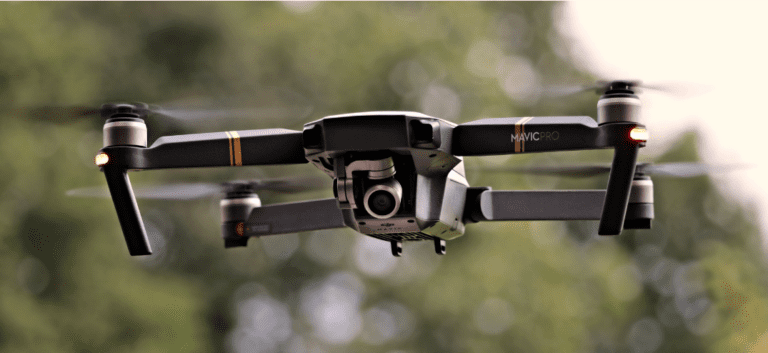Get Quotes
5MinuteInsure.com is not yet available in your area. Check back
soon!
This article has been reviewed by licensed insurance industry expert, Moshe Fishman on 6/8/2023.

“It’s a bird! It’s a plane!”
No, it’s just your insurance company’s drone flying around.
Drones are commercially available, relatively cheap, miniature helicopters that can record video and capture pictures from the air.
Drones are already being used in a wide range of business applications in the United States. From inspecting power lines and delivering products to playing a key role in search and rescue operations, they are quickly becoming an integral part of many business operations.
For decades, insurance companies have relied on statistical analysis to help determine their rates. If you drive your car in area X, you are likely to get in more accidents than in area Y. With this in mind, they charged higher premiums in the riskier zone. It is a tried and tested system but it is not perfect.
Drone usage by insurance companies has gained momentum in recent years thanks to technological advances and greater accessibility. From automated data collection to claims assessment, drones are providing insurance companies with new tools to improve their processes.
For the past two decades, insurance companies have faced difficulties in obtaining accurate claims cost information. That’s because traditional methods of obtaining damage estimates are complicated and time-consuming.
Insurance companies are constantly looking for new ways to tailor their pricing models to individuals based on their risk profiles. They aim to charge higher prices for customers who are more likely to file claims but offer competitive rates for customers who will be less likely to need insurance. This is where drones can help with collecting better data and creating realistic 3D models of structures or objects for more accurate insurance pricing models.
Drones are able to resolve this problem as they have the capabilities to assess risks more effectively. They provide insurance brokers with accurate, real-time data about potential risks. As a result, insurers develop better pricing models before issuing a policy.
For example, capturing data about site vulnerabilities helps insurance companies predict damage susceptibility. This allows them to develop accurate, tailored pricing models at a lower cost than traditional inspection methods.
Drones are particularly useful in monitoring natural disaster emergencies such as floods, fires, and hurricanes. Drones can be employed in high-risk regions without endangering human life.
During an emergency, insurers can gain an accurate assessment of the damage before productively deploying relief efforts and assist in evacuating local residents who are in harm’s way.
Drones are also useful after an emergency situation. They are able to capture live footage and document damage more accurately. This allows insurance companies to quickly begin working with their customers on rebuilding efforts.
Another area where drones can help with disastrous events is through prevention. Drones equipped with thermal imaging devices can detect water or gas leaks that might otherwise go undetected.
As the use of drones becomes more widespread and their capabilities grow, so will their value propositions for insurance companies. Insurance companies are already using drones as a tool to combat fraud and increase efficiencies in risk management strategies. As a result, a more sophisticated fraud management model is emerging.
Fraudulent claims amount to approximately $40 billion each year. One of the major benefits to an insurer using drones for monitoring purposes comes from its real-time data collection.
Unlike after-the-fact investigation methods (such as interviews or witness reports), drones allow insurance companies to take high-quality before and after pictures of properties, making it simpler to detect fraudulent claims. For example, drones can inspect car collision damage from a multi-angle view, instead of relying solely on testimonials.
Capturing data about a site’s susceptibility to damages is costly and time-consuming. The process involves on-site inspections by teams of experts that can take up to several weeks to complete.
Insurance companies are able to perform a complete property inspection with drones, cutting down on turnaround time and overall costs.
Drones are able to inspect properties with greater speed by capturing photographs and videos instantaneously from multiple angles. As such, inspectors don’t have to revisit the site for a more in-depth investigation following the initial inspection.
Drones are also more accurate than humans when it comes to measurement precision. As such, drones help insurance companies make fewer errors when measuring property damage or assessing liability for multi-party accidents.
Insurance companies can leverage drones to obtain accurate, real-time site safety data and identify potential threats to reduce the risk of accidents and injuries.
Drones can inspect properties that are difficult or dangerous for humans to access, such as high-rise buildings, bridges, and dams. Insurance companies can leverage drones to map hard-to-reach areas and identify high-risk terrain and obstacles that could result in accidents. Drones are able to monitor sites from above, providing a bird’s eye view.
By using drones, insurance companies can create precise heat maps that highlight areas of concern and increase visibility into potential problem spots.
Commercial drones may be relatively new but they’ve already made an impact in the insurance industry. Insurance carriers need a fast, reliable, and cost-effective way to inspect and process claims, and drones fit the bill. Drones deliver a cheaper and safer way for carriers to access data and process claims more efficiently, which ultimately promotes a better customer experience.
We’ll definitely see a lot of drones buzzing around in the near future as more insurance companies continue to adopt them for a competitive advantage. So the next time you see a drone in your neighborhood, don’t be alarmed. It may very well belong to your insurance company!
Want to learn more about disruptive technology that is impacting the insurance landscape? Visit the 5 Minute Insure blog